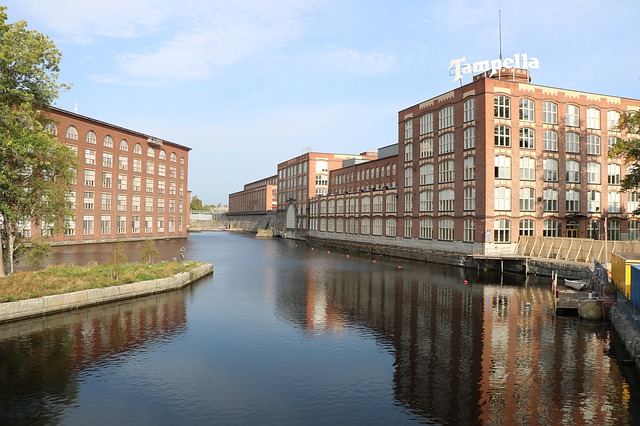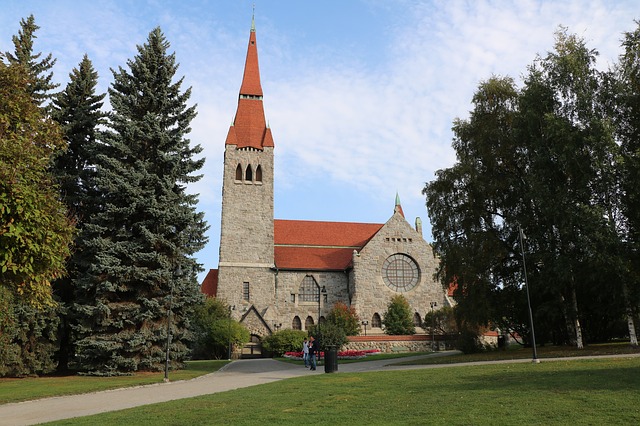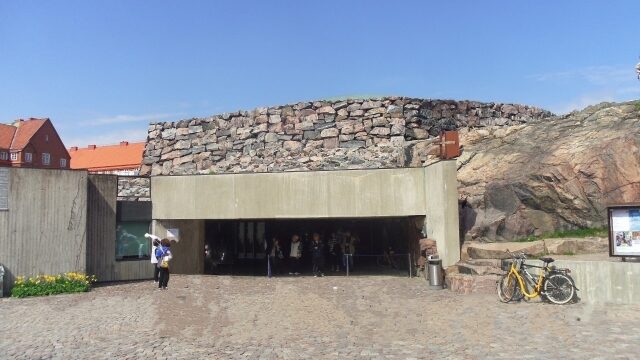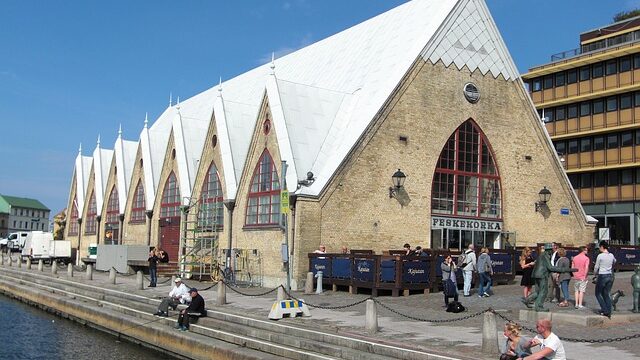Tampere is the second largest city in Finland, after Helsinki.
Tampere has developed rapidly since the 20th century as one of Finland’s leading industrial cities.
Tampere Cathedral, a stone church on the western side of Tampere, is the focus of this article.
Here, I will explain in detail about Tampere Cathedral, its attractions, and the process of its construction.
If you are interested in learning more about the history and sights of Tampere, or if you are considering a trip to the city, please read on.
Features of Tampere Cathedral

Tampere Cathedral is the second largest church in Finland, after Helsinki, and is located in the city of Tampere.
Tampere Cathedral was built between 1902 and 1907.
It is a relatively new church in Nordic countries, where there are many medieval buildings.
It was designed by Lars Sonck. The church was built in the Romantic architectural style, which was popular from the 19th to 20th century.
When it was first built, it was not called Tampere Cathedral as it is today, but St. John’s Church.
The exterior of Tampere Cathedral is striking with its orange-red roof and stone walls.
It has a solemn and simple appearance with few fancy exteriors.
In front of Tampere Cathedral is a small square with green grass and flowers, which matches the calm atmosphere of the cathedral.
A stone wall has also been built around Tampere Cathedral to enclose the building.
The wall has a total of six entrances, so visitors can enter through any one of them.
Inside the cathedral with a unique world view
The interior of Tampere Cathedral has an extraordinary atmosphere with many paintings with unique touches, such as the snake motif in the decoration and the flask paintings on the ceiling.
Famous works include “The Garden of Death” and “The Wounded Angel”.
The Garden of Death is a work by an artist named Hugo Simberg.
It depicts a skeleton nurturing a flower, evoking both beauty and death at the same time.
What is Tampere?

The city of Tampere is not well known.
However, Tampere is one of the leading industrial cities in Nordic countries and is attracting a lot of attention from Europeans, especially business people.
Tampere was founded around the 18th century.
It was founded by King Gustaf III of Sweden, who ruled Finland at the time.
In the 20th century, Tampere developed rapidly, with spinning and metalworking as its main industries.
In addition to the modern cityscape of factories and office buildings, Tampere is also located in what is known as Finland’s Lake District, an area with many beautiful lakes and natural features in the surrounding area.
Tampere is geographically located between two lakes, Näsijärvi in the north and Pyhäjärvi in the south.

The difference in elevation between the two lakes is about 18 meters, and Tampere took advantage of this drop in elevation to develop hydroelectric power generation.
This is how Tampere has established itself today as the second-largest industrial city in Finland, taking advantage of its geographical features to generate hydroelectric power.
The process of building Tampere Cathedral

When Tampere Cathedral was built at the beginning of the 20th century, Tampere was in the process of expanding and developing as an industrial city.
As the city grew, so did the population of the urban area, but here a problem arose.
The rapid increase in the number of people caused crowds to gather in churches on Sundays.
In addition, to the east of Tampere was the Finlayson factory, the largest facility of its kind in Nordic countries at the time.
A large number of employees and users of the factory also added to the congestion of the church.
As a solution to the mixed use of churches at the time, a new church was built in addition to the existing one in an attempt to disperse the congregation that came to worship.
This is how Tampere Cathedral was born.
The cathedral was built on the west side of the city, opposite the Finlayson factory area, which helped to disperse the visitors and eliminate the crowding that had previously existed.
Conclusion
Tampere Cathedral, designed by Lars Sonck, was built in the 20th century to accommodate Tampere’s remarkable industrialization.
The stone exterior has a medieval atmosphere.
The interior of the church also contains works by famous artists.
This makes Tampere Cathedral a representative place in Tampere.





